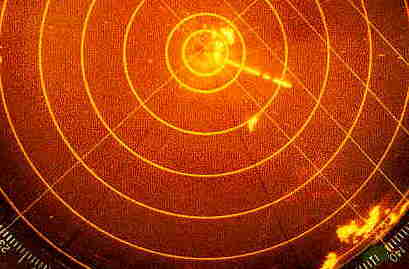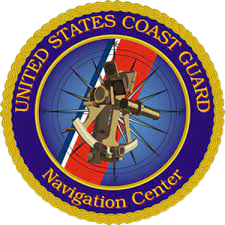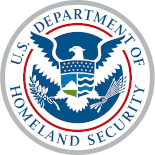RACONs, also called radar responders, or radar transponder beacons, are receiver/transmitter transponder devices used as a navigation aid, identifying landmarks or buoys on a shipboard marine radar display. A racon responds to a received radar pulse by transmitting an identifiable mark back to the radar set. The displayed response has a length on the radar display corresponding to a few nautical miles, encoded as a Morse character beginning with a dash for identification. The inherent delay in the racon causes the displayed response to appear behind the echo from the structure on which the racon is mounted. Racons and their identifying marks are normally indicated on marine charts. Racons are used in the U.S. for the following purposes:
A racon responds to a received radar pulse by transmitting an identifiable mark back to the radar set. The displayed response has a length on the radar display corresponding to a few nautical miles, encoded as a Morse character beginning with a dash for identification. The inherent delay in the racon causes the displayed response to appear behind the echo from the structure on which the racon is mounted. Racons and their identifying marks are normally indicated on marine charts. Racons are used in the U.S. for the following purposes:
- to identify aids to navigation, both seaborne (e.g. buoys) and land-based (e.g. lighthouses)
- to identify landfall or positions on inconspicuous coastlines
- to indicate navigable spans under bridges
- to identify offshore oil platforms and similar structures
- to identify and warn of environmentally-sensitive areas (such as coral reefs)
Outside the U.S., racons are also used:
- to mark new and uncharted hazards (these should use the Morse identifier "D")
- to identify the center and turning points
- as leading line racons
The U.S. Coast Guard operates approximately 80 racons. Several more are operated by states or private organizations, such as those marking oil rigs in the Gulf of America, or bridges in California. The use of a racon for any purpose other than as a navigation aid is prohibited.
Racon Technical Characteristics
All racons used by the USCG are frequency agile type, designed to measure the frequency of every incoming radar pulse, and transmit an approximately 25 microsecond Morse-encoded response less than 700 nanoseconds later back to the radar on that frequency. The Morse-encoded response is encoded such that the length of one dash is equal to that of three dots, and the length of one dot equals that of one space. All racons operate over the frequency range 9300-9500 MHz marine radar band (X-band), and most additionally operate in the 2900-3100 MHz marine radar band (S-band). Racon range is an approximately line-of-sight range, normally over 15 nautical miles, although actual range depends upon a number of factors, including mounting height, atmospheric conditions, and racon receiver sensitivity setting.
S-band racon antennas should be suitable for responding to radars using horizontal or vertical polarization. X-band racons should respond to radars using horizontal polarization. X-band antenna vertical divergence ranges from about 8 degrees for fixed installations, to 18 degrees for installation on buoys. S-band antenna vertical divergence is 22 degrees. Radiated power is 600 milliwatts. Receiver sensitivity is about -35 dbm.
Older racons, no longer used by the USCG but still used in other parts in the world, operate in a slow sweep mode. The transmitter on a slow sweep racon slowly sweeps every 1 to 2 minutes through the 9300-9500 MHz band, and when interrogated, responds back on the frequency the transmitter happens to be tuned to at the time. The response from most slow sweep racons is visible on a radar display for only about 5% of the time.
Ramarks are radar beacons which transmit independently, without having to be triggered by a ship radar. A ramark response on a radar display gives no indication of distance, but instead extends from the ship's position to the circumference of the display. Ramarks are not used in the U.S.
Display of a Racon Response
In order to conserve battery power, racons installed on buoys in the U.S. are programmed to operate 50% of the time. These racons are normally active for 20 seconds, and then off for the next 20 seconds. Racons installed on shore, where battery life is not a factor, are normally programmed to operate 75% of the time. Racons are usually not programmed with a duty cycle greater than 75%, in order to ensure that the response never completely masks an important radar target.
The anti-clutter rain control on radar could mask a racon return and may need to be shut off. The anti-clutter sea control on certain radars could also degrade a racon response in some situations. Clutter rejection circuitry on some radar equipment may also suppress a racon response. The detection range of a racon may also be reduced if the radar receiver is off-tuned. Tweaking the radar tuning control should correct that problem.
Under conditions of abnormal radio propagation, a spurious racon flash may be received at ranges considerably in excess of a racon's quoted range, regardless of the range to which the ship's radar is set; such a spurious flash may appear in any random position along the correct bearing on the display. Therefore, reliance should only be placed on a racon flash if its appearance is consistent and if the ship is believed to be within the racon's quoted range. (ALRS 2)
For More Information...
IALA Aids to Navigation Guide, ISBN 2-910312-03-8, published by the International Association of Lighthouse Authorities (IALA), 20ter, rue Schnapper, 78100 Saint Germain en Laye, France.
ITU-R Recommendation M.824, Technical Parameters of Radar Beacons (RACONS), International Telecommunications Union, Geneva, Switzerland.
Admiralty List of Radio Signals, Volume 2, United Kingdom Hydrographic Office, Admiralty Way, Taunton, Somerset, TA1 2DN, UK. (ALRS 2)
Note: The photograph at the top-right of this page is a racon response coded with the Morse character "Q", located near Boston Harbor (Nahant), using a 25kw radar. The radar probably has a 6' antenna. Courtesy, Tideland Signal Corp.

